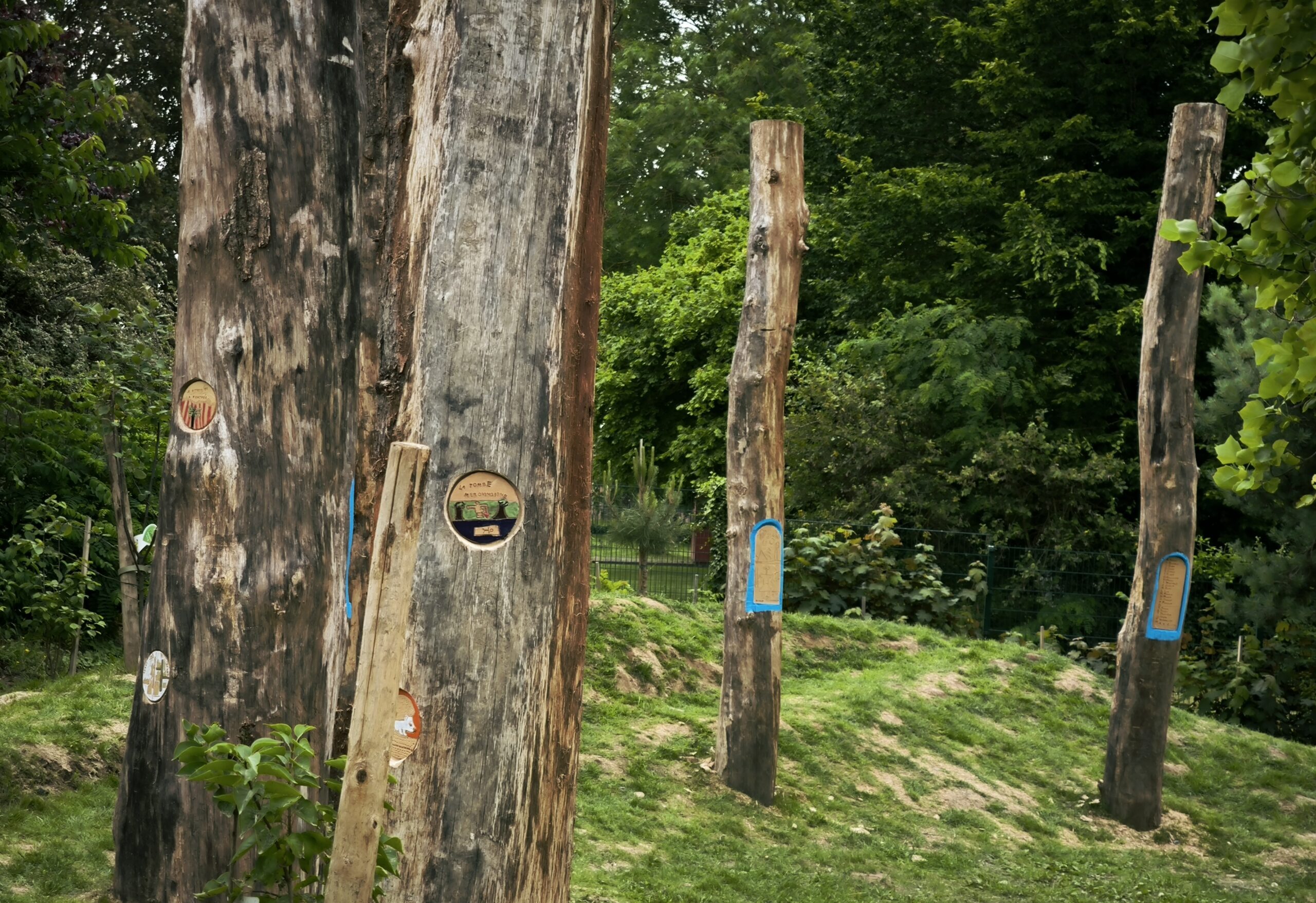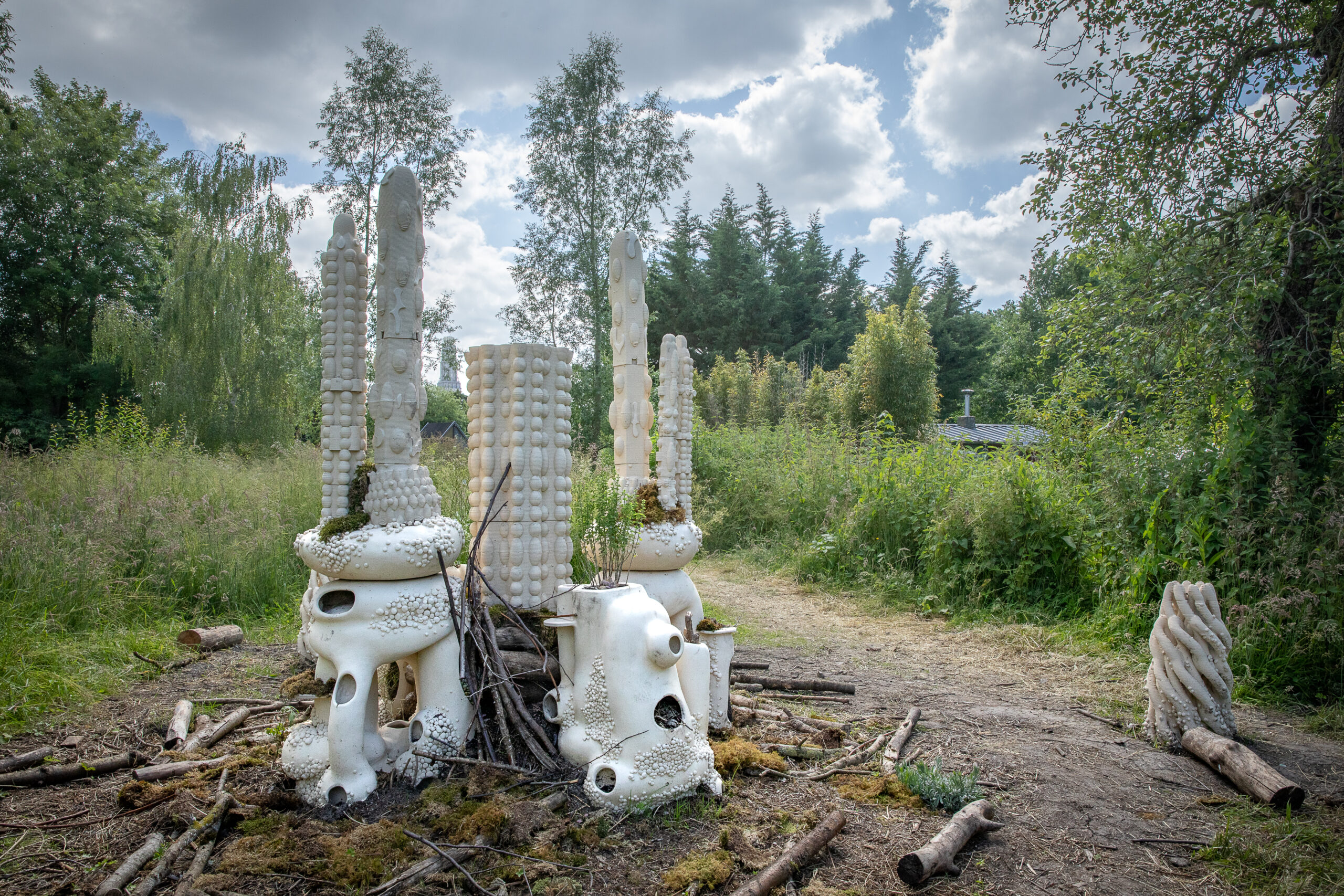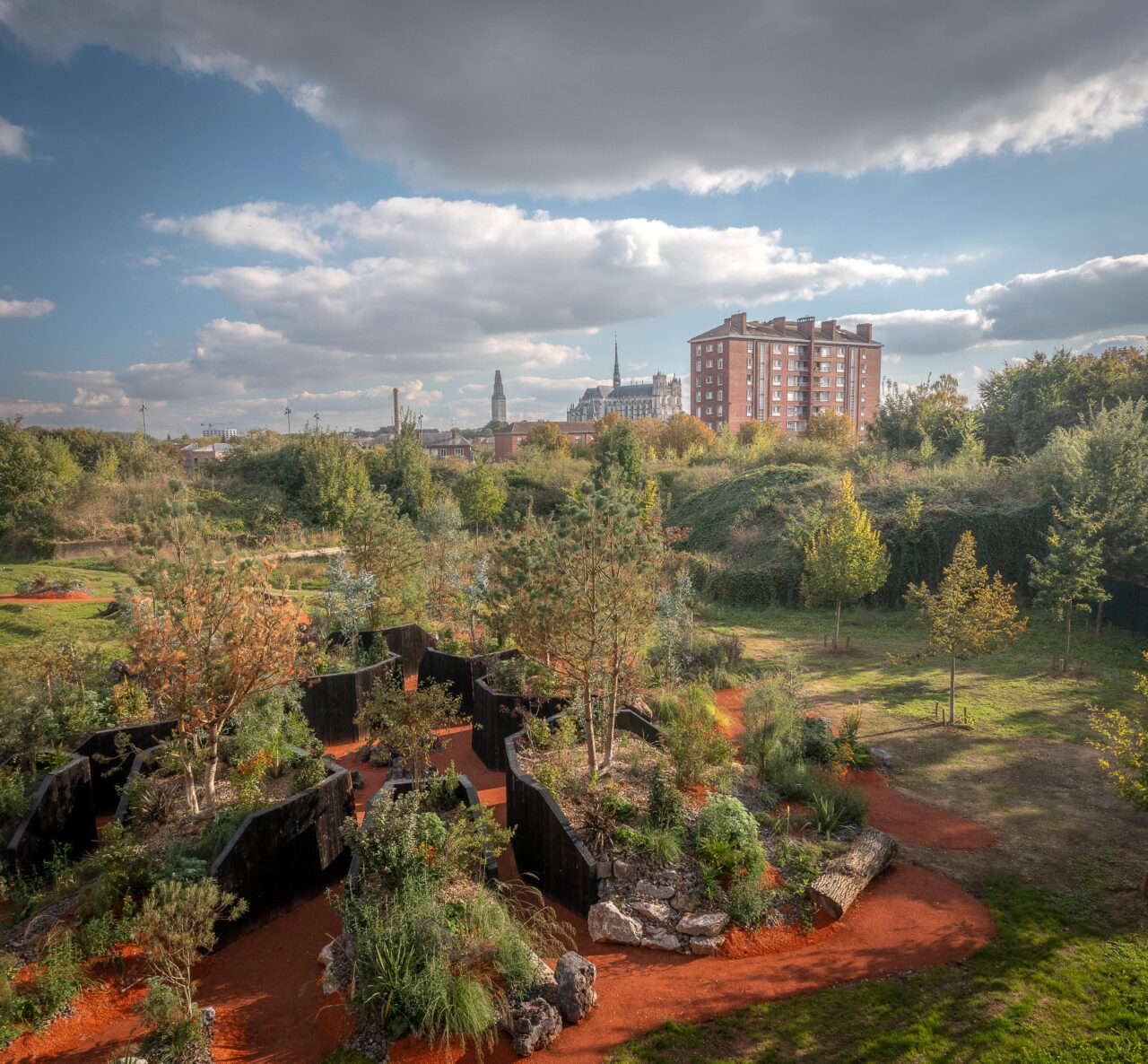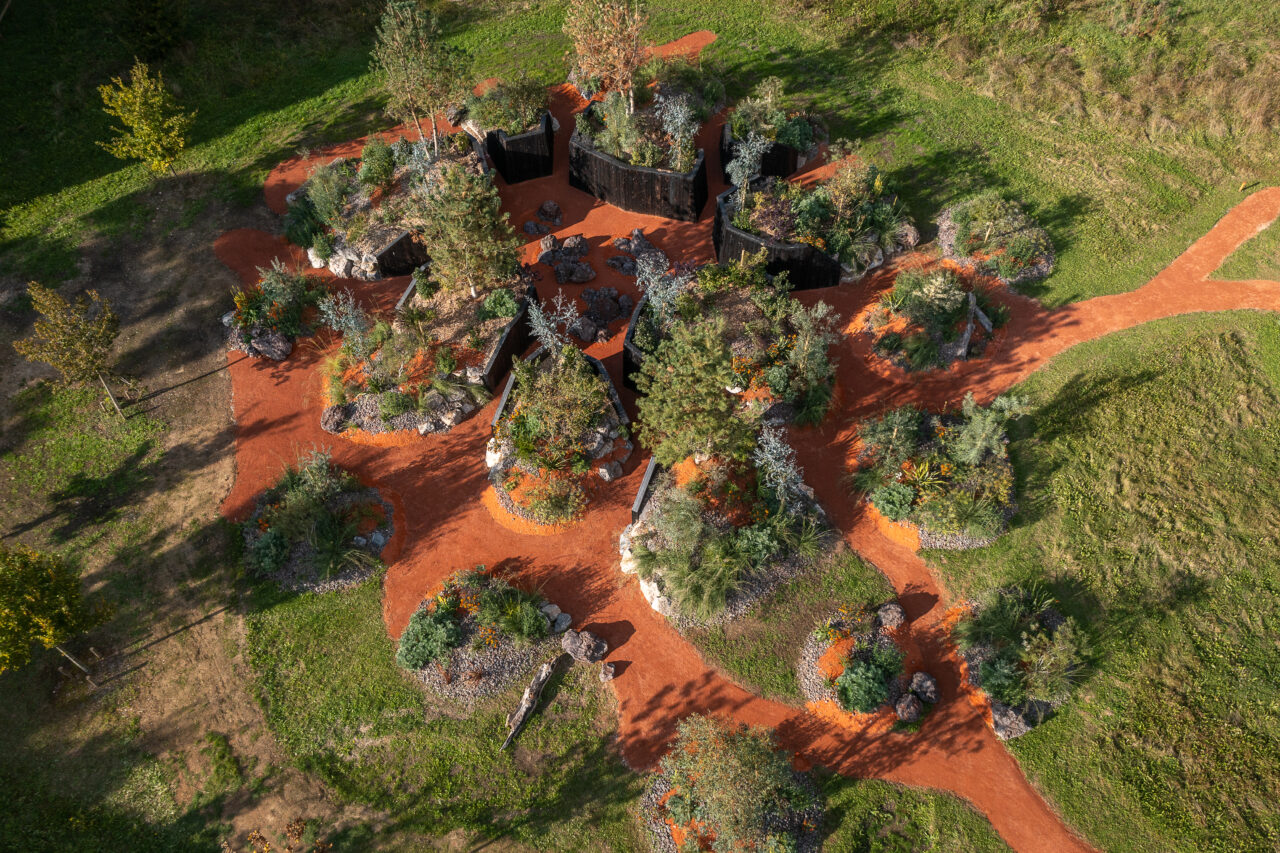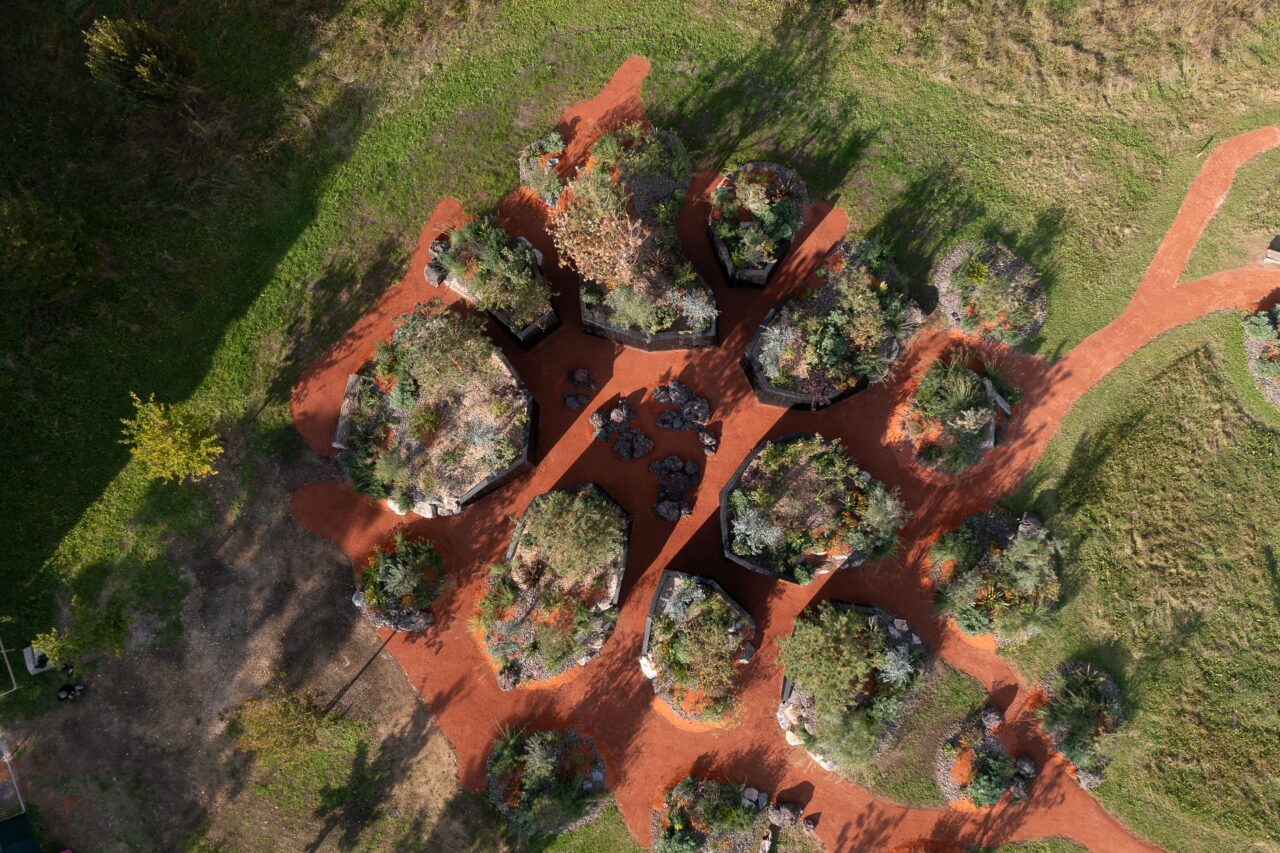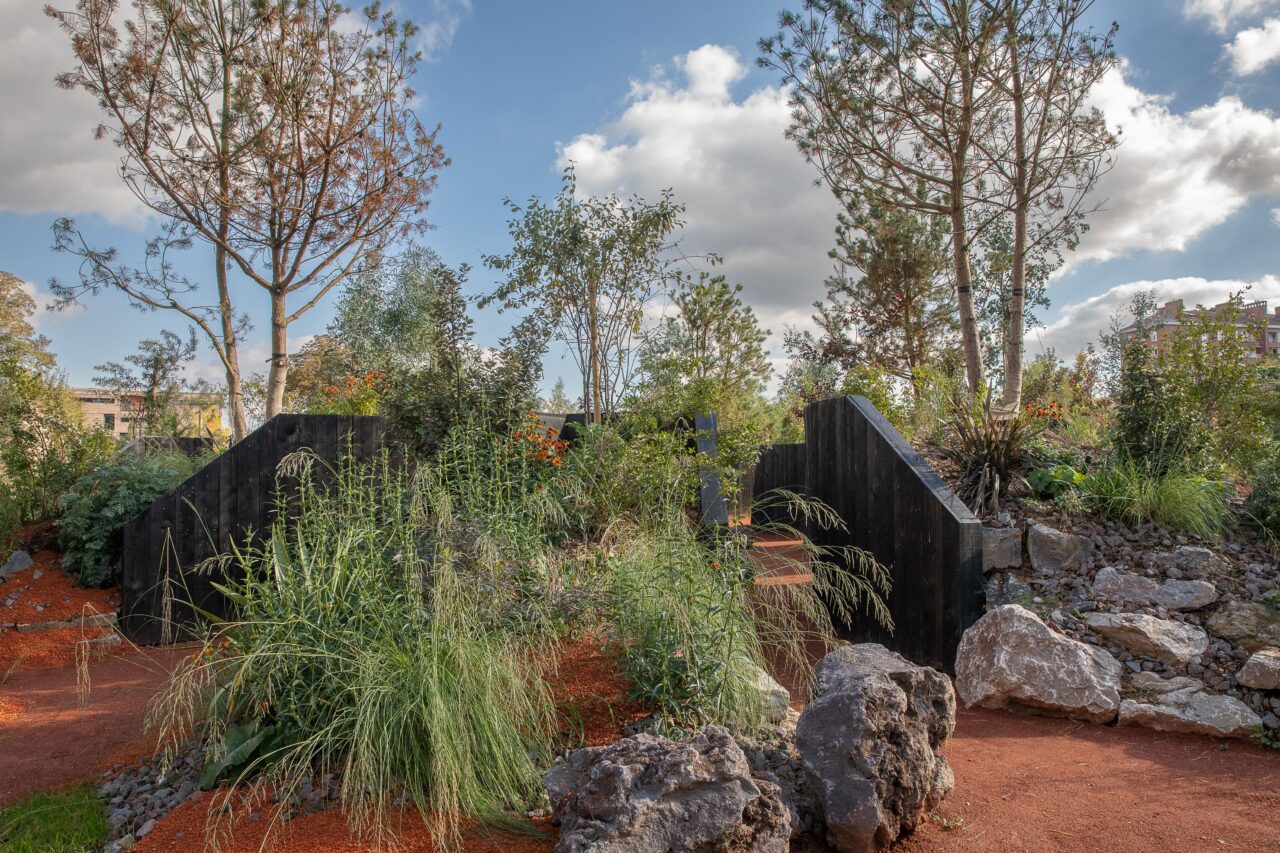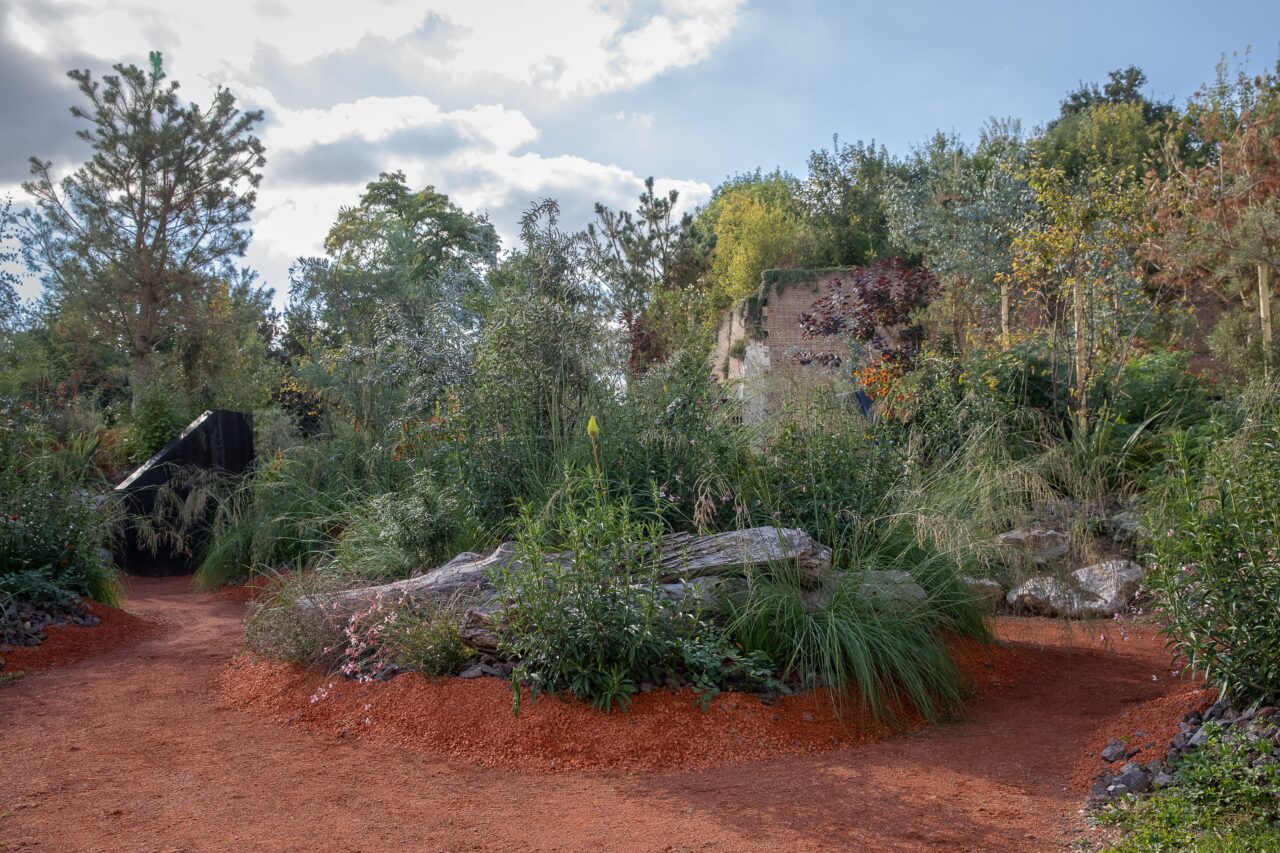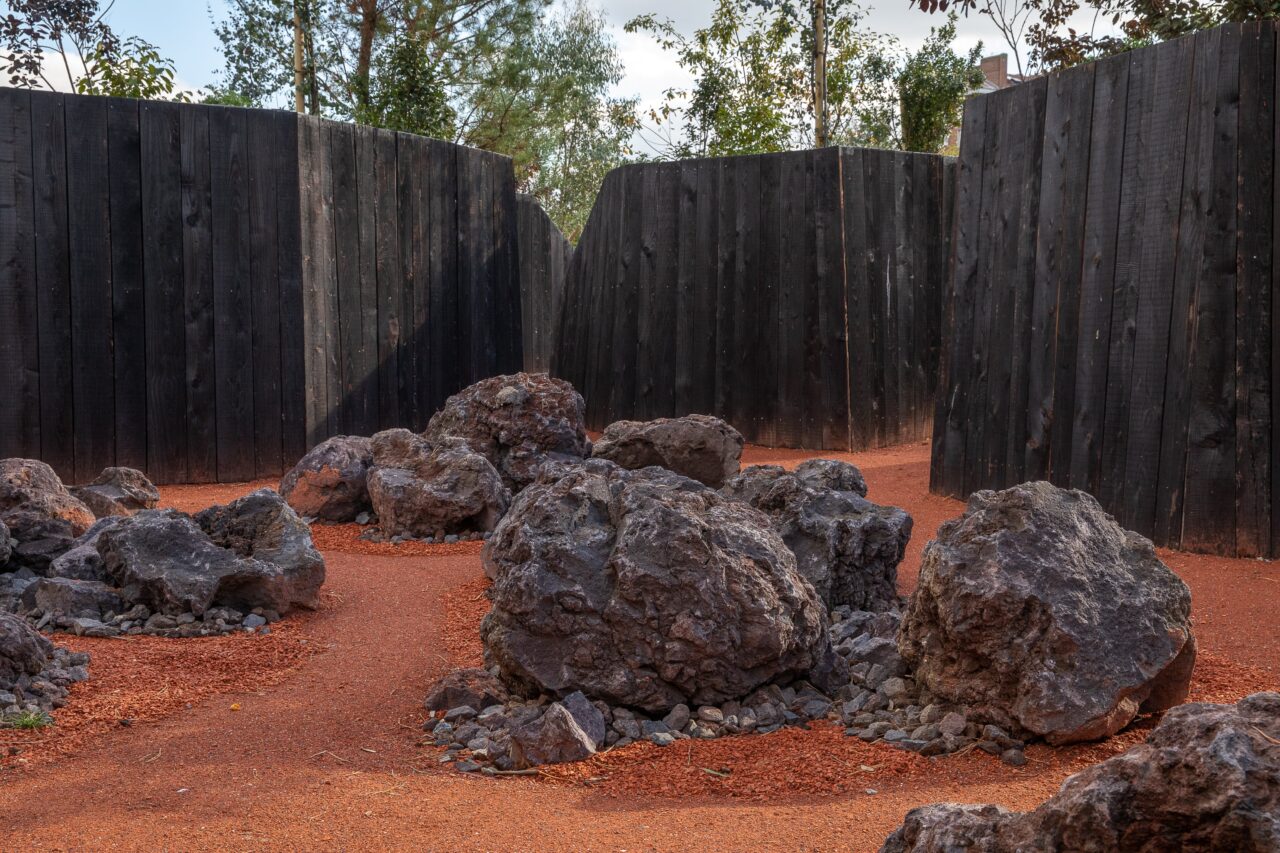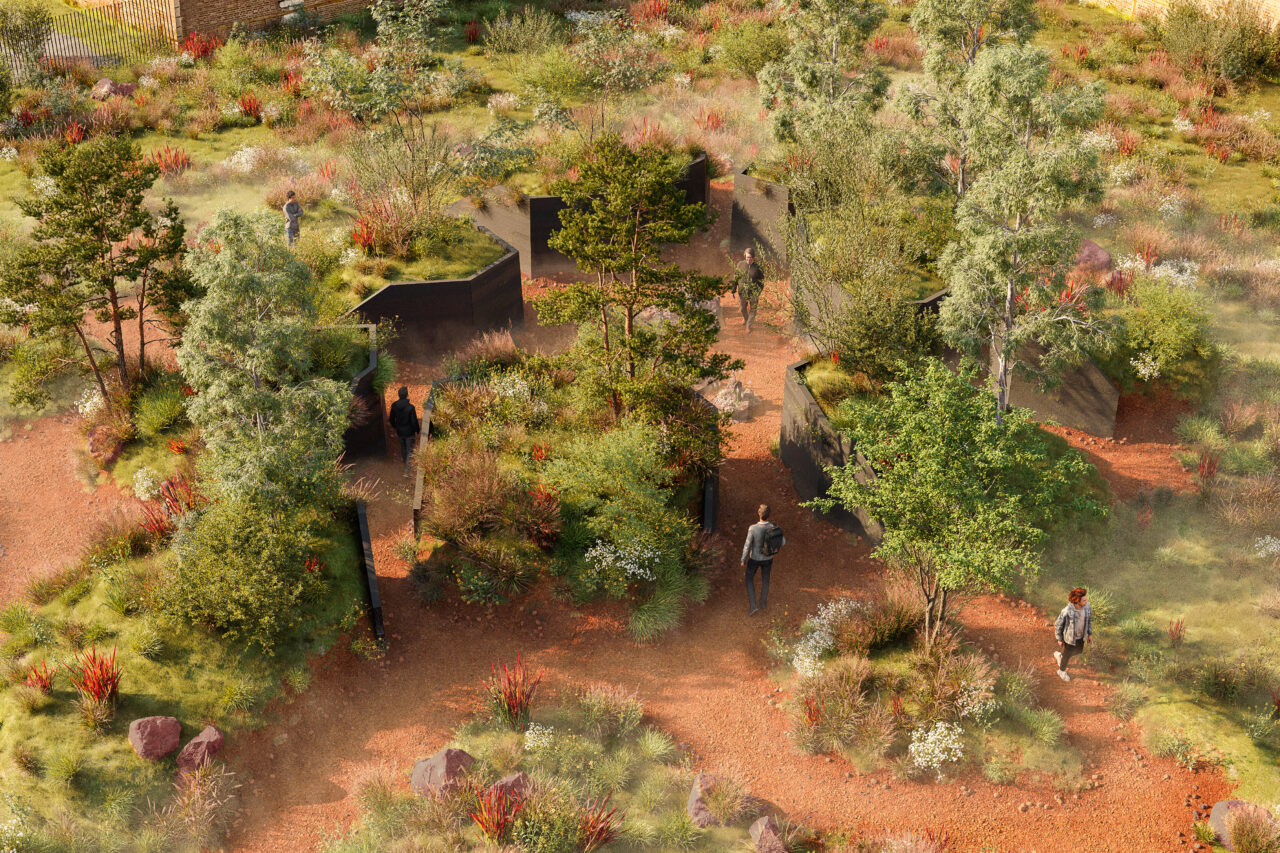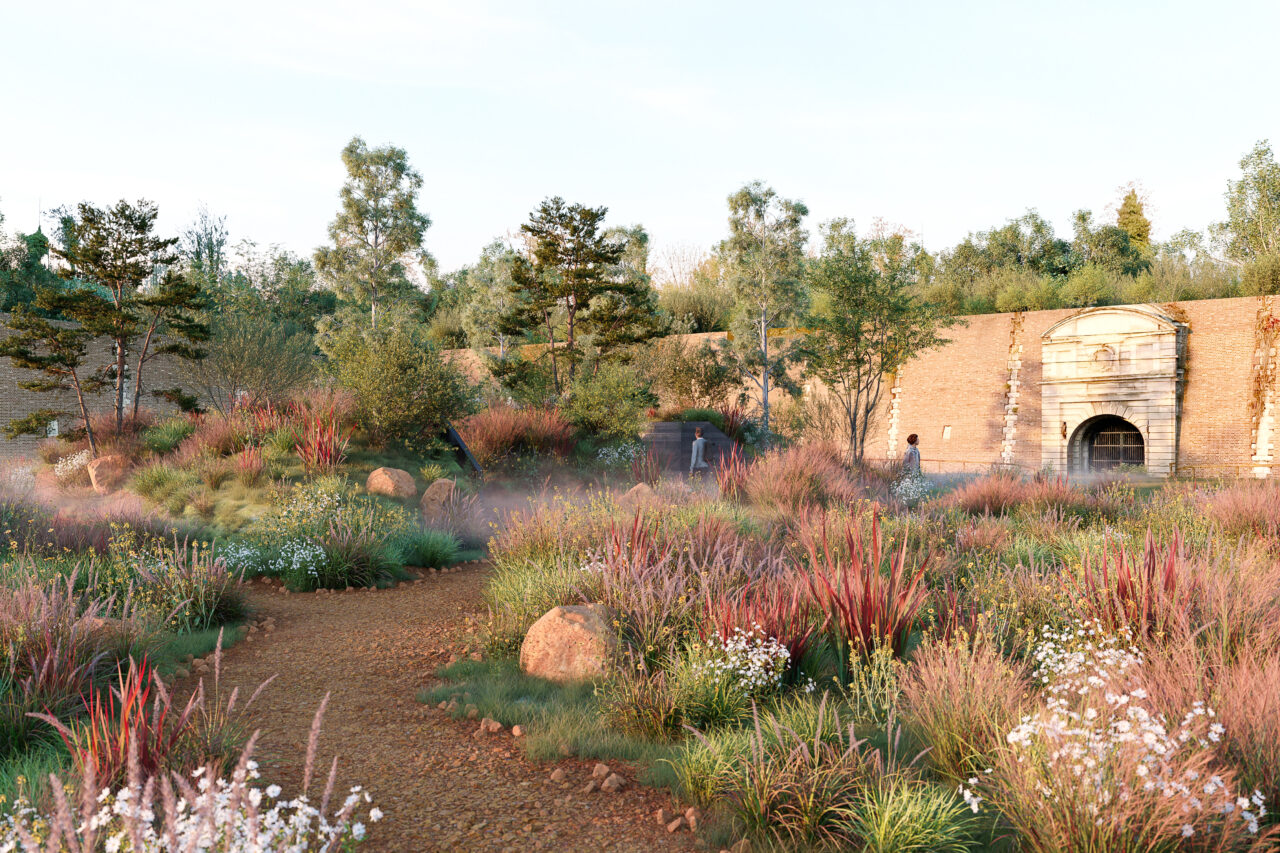Garden of Dreams > australian Garden of Peace, 2024
The Garden of Dreams is located in a place steeped in history, at the foot of the ramparts, the last place of resistance to the Germans’ entry into Amiens during the Second World War.
It is therefore both honourable and symbolic to create a garden at its centre, paying tribute to the Australian troops who resisted and avoided the capture of Amiens during the First World War.
The Garden of Dreams is imagined as a last thought, a journey of the mind, a moment when the confusion of a dream with reality mingles. It is the projection of an elsewhere in the chaos of combat that an Australian soldier might imagine. A landscape dreamt of by those who will never see their homeland again, as a sacrifice for peace.
Set in the heart of the courtyard, like a mirage, visitors discover a large garden of warm colours that come alive in the sunlight. As they approach, an informal path takes shape in the shifting ground, inviting them to subtly discover the rest of the garden. The paths are made of crushed brick and ochre sand, reminiscent of the red earth of the Australian bush and the ramparts of the citadel.
The relief of the ground is inspired by the scars of the First World War, the rugged terrain of the bombing raids and the trenches still visible on the battlefields of the Somme (Beaumont-Hamel).
These islands of land also symbolise the fragmentation of cultures and origins, here all brought together in an archipelago forming the common landscape of the alliance of foreign forces engaged in the War.
This topographical interplay is amplified and guides visitors towards the centre, where the pathways narrow into increasingly dense vegetation. The vegetation gradually takes root. The first ring of islands, furthest from the centre, is made up of meadow species with conquering perennials in full bloom. The second ring forms a shrub border, mainly made up of evergreen shrubs. They have been selected to evoke the Australian landscape, like the seeds that travel with the soldiers. The last crown, closest to the centre, forms a tree belt. In autumn, the flamboyant foliage of the serviceberry, phormium and sporobola floods the garden with warmth, contrasting with the gloomy hues of the pine, eucalyptus, mimosa and sea buckthorn.
In this last crown, the landscape fragments become increasingly important. On either side, the walls are reinforced by pine stakes blackened using a burning technique to evoke the atmosphere of the trenches, giving visitors a feeling of being squeezed in.
Visitors then move towards the centre, where the light is filtered through the canopy of trees. An undergrowth atmosphere plunges visitors into an atmosphere of sanctuary, conducive to homage and contemplation.
In this clearing that opens onto the sky, rocks, seemingly inert, burst into ephemeral white blossom every year, a boundless garden for peace that is renewed every spring.


